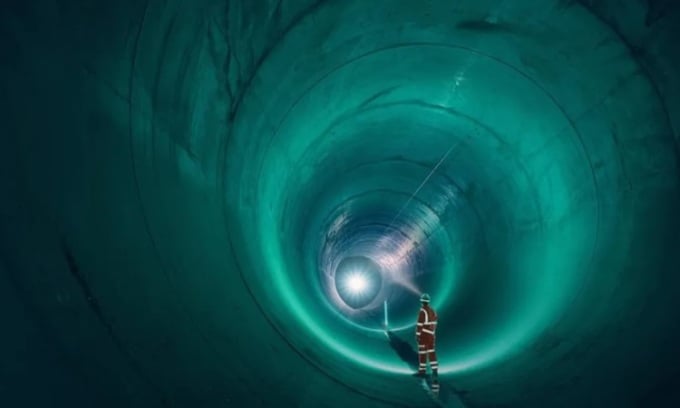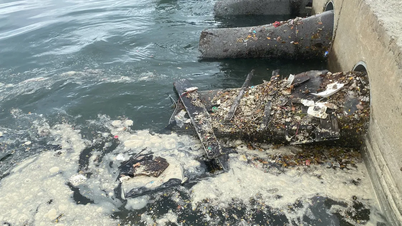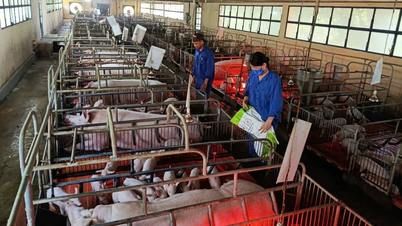After eight years of construction, a super sewer that can hold the amount of water equivalent to 600 Olympic swimming pools beneath London has been completed and will be put into trial operation this summer.

The sewer pipe is wide enough to fit three buses side by side. Photo: Thames Tideway Tunnel
Called the Thames Tideway Tunnel, the project is designed to reduce the amount of raw sewage flowing into the Thames. The 25km-long tunnel will divert 34 of the most polluted wastewater streams into the Thames, the BBC reported on March 27. According to Andy Mitchell, managing director of the Thames Tideway project, they will retain the vast majority of wastewater flowing into the river, making the Thames cleaner.
In the final stage of construction, a giant 1,200-ton concrete cap was placed over the pipe in east London. London’s combined sewage system handles both human waste and stormwater, but the city’s population has strained the infrastructure. Under normal conditions, raw sewage flows into a treatment plant, but today, even a light drizzle in London can overwhelm the network, sending floodwaters flowing into the Thames. Instead of flowing into the river, the new super sewer will hold nearly all of central London’s overflow until it can be treated.
The first wastewater flows into the tunnel are expected this summer, with the project expected to be fully operational by 2025. While the original cost was estimated at $5.3 billion, the tunnel has cost about $6.3 billion, a cost that will be paid for by Thames Water customers over several decades.
The 7.2m-wide tunnel slopes steadily from Acton in west London to Abbey Mills in the east. During periods of prolonged rainfall, the tunnel will contain a mixture of raw sewage and stormwater. It can hold the equivalent of 600 Olympic swimming pools, which will then be pumped into Europe's largest wastewater treatment facility in Beckton in east London. After operating for the summer, the super sewer will be handed over to Thames Water.
While the new super sewer is one of the biggest upgrades to London’s sewer network since Joseph Bazalgette built it in the 1860s, it’s certainly not a permanent solution. Scientists predict that climate change will bring more intense rainfall to the UK, meaning that even the giant super sewer will eventually overflow.
London Waterkeeper campaigner Theo Thomas said the government should spend money on projects across London to stop rainwater flowing directly into sewers and mixing with raw sewage. Mitchell agreed, but said it was not feasible to quickly build a new network that separated wastewater and stormwater in London at a reasonable cost.
An Khang (According to BBC )
Source link




![[Photo] Prime Minister Pham Minh Chinh chairs the Government's online conference with localities](https://vphoto.vietnam.vn/thumb/1200x675/vietnam/resource/IMAGE/2025/10/5/264793cfb4404c63a701d235ff43e1bd)


![[Photo] Prime Minister Pham Minh Chinh launched a peak emulation campaign to achieve achievements in celebration of the 14th National Party Congress](https://vphoto.vietnam.vn/thumb/1200x675/vietnam/resource/IMAGE/2025/10/5/8869ec5cdbc740f58fbf2ae73f065076)















































![[VIDEO] Summary of Petrovietnam's 50th Anniversary Ceremony](https://vphoto.vietnam.vn/thumb/402x226/vietnam/resource/IMAGE/2025/10/4/abe133bdb8114793a16d4fe3e5bd0f12)

![[VIDEO] GENERAL SECRETARY TO LAM AWARDS PETROVIETNAM 8 GOLDEN WORDS: "PIONEER - EXCELLENT - SUSTAINABLE - GLOBAL"](https://vphoto.vietnam.vn/thumb/402x226/vietnam/resource/IMAGE/2025/7/23/c2fdb48863e846cfa9fb8e6ea9cf44e7)







































Comment (0)